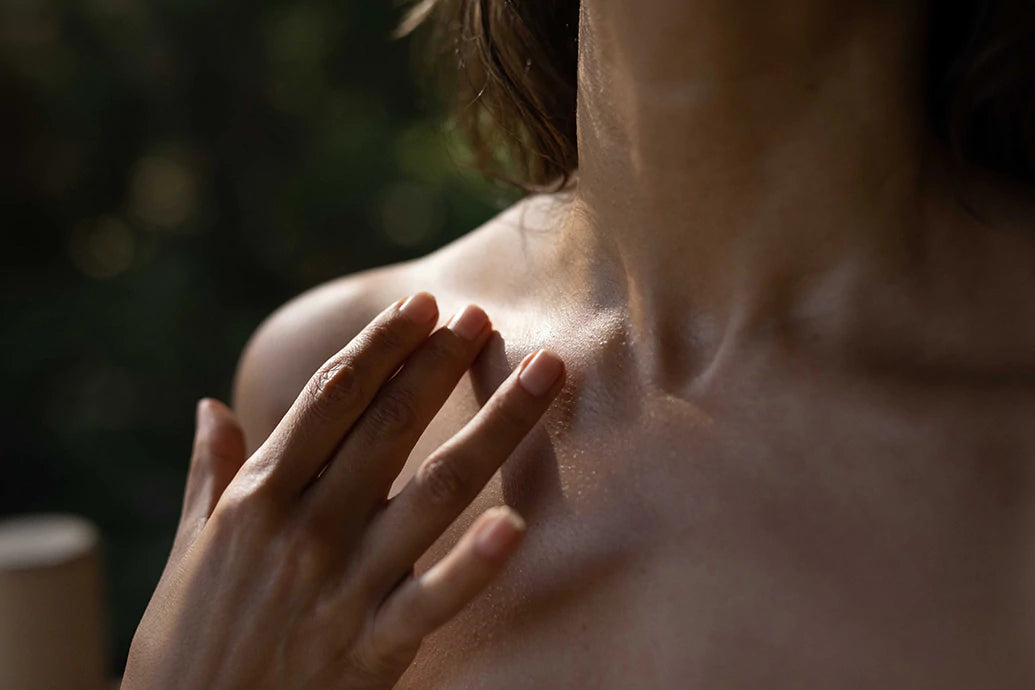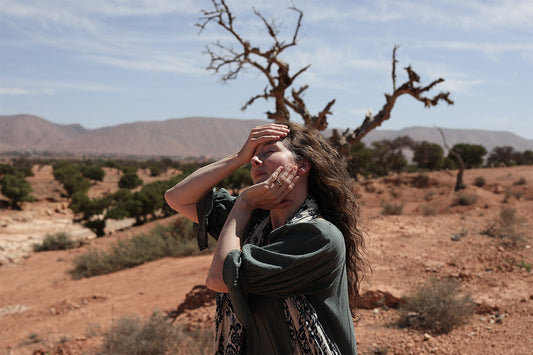Types of solar radiation
UVA, UVB and UVC
UVA (A = think aging) rays have the least energy among UV rays. These rays can cause skin cells to age and can cause some indirect damage to cells’ DNA. UVA rays are mainly linked to long-term skin damage such as wrinkles, but they are also thought to play a role in some skin cancers.
UVB (B = think burn) rays have slightly more energy than UVA rays. They can damage the DNA in skin cells directly, and are the main rays that cause sunburns. They are also thought to cause most skin cancers. But exposure to UVB can also help the skin produce a type of Vit D, D3 which plays an important role (assisted by calcium) in bone and muscle health. However, the amount of UVB exposure needed to obtain a benefit depends on several factors, such as: the amount of vitamin D in your diet, skin color, sunscreen use, clothing, where you live (latitude and altitude), time of day, and time of year. Also, the FDA has not cleared or approved any indoor tanning device for producing Vitamin D
UVC (C = think chemical) rays have more energy than the other types of UV rays. Fortunately, because of this, they react with ozone high in our atmosphere and don’t reach the ground, so they are not normally a risk factor for skin cancer. But UVC rays can also come from some man-made chemical sources, such as arc welding torches, mercury lamps, and UV sanitizing bulbs used to kill bacteria and other germs (such as in water, air, food, or on surfaces). [source: cancer.org]
UVA rays have the longest wavelengths, followed by UVB, and UVC rays which have the shortest wavelengths. While UVA and UVB rays are transmitted through the atmosphere, all UVC and some UVB rays are absorbed by the Earth's ozone layer. So, most of the UV rays you come in contact with are UVA with a small amount of UVB.
 We’re probably all familiar with the term SPF/ Sun Protective Factor
We’re probably all familiar with the term SPF/ Sun Protective Factor
SPF is a measure of how much solar energy (UV radiation) is required to produce sunburn on protected skin (i.e., in the presence of sunscreen) relative to the amount of solar energy required to produce sunburn on unprotected skin. As the SPF value increases, sunburn protection increases.
There is a popular misconception that SPF relates to time of solar exposure. For example, many consumers believe that, if they normally get sunburn in one hour, then an SPF 15 sunscreen allows them to stay in the sun 15 hours (i.e., 15 times longer) without getting sunburn. This is not true because SPF is not directly related to time of solar exposure but to amount of solar exposure. Although solar energy amount is related to solar exposure time, there are other factors that impact the amount of solar energy. For example, the intensity of the solar energy impacts the amount. The following exposures may result in the same amount of solar energy:
-
one hour at 9:00 a.m.
-
15 minutes at 1:00 p.m.
Generally, it takes less time to be exposed to the same amount of solar energy at midday compared to early morning or late evening because the sun is more intense at midday relative to the other times. Solar intensity is also related to geographic location, with greater solar intensity occurring at lower latitudes. Because clouds absorb solar energy, solar intensity is generally greater on clear days than cloudy days. [source FDA.gov]
Mineral Blocks vs Chemical Blocks
Chemical sunscreens use chemicals to filter out the sun's damaging UV rays.
Oxybenzone is a chemical ingredient that may behave like estrogen. Oxybenzone penetrates the skin readily and can disrupt the hormone system.
Don’t use a Spray - Sprays cloud the air with tiny particles that may not be safe to breathe.
Mineral sunscreens physically block ultraviolet radiation with ingredients like titanium dioxide or zinc oxide. As such, a mineral sunscreen is sometimes called physical sunscreen or sunblock. Their action deflects the harmful rays from the surface of the skin.
My favorite? I prefer zinc oxide as a physical sunblock.
I’ve lived in California virtually all my life. Not only that, but I lived within walking distance of beautiful Laguna Beach. I am predominately Irish, with a strong familial predisposition to skin cancer, inherited from both parents. While these facts are not great news for people like me with similar skin types and genetics, you certainly don’t have to live in an underground bunker, just use common sense.
Cover the face with a wide brimmed visor or hat that covers the sides of the face. Wear loose-fitting long sleeves and pants. Apply sunblock and the rule of thumb is to apply 1 tsp of a sun block to the face. That’s considerably more than most people apply, which is why skin cancers are so prevalent. Usually wearing a product that is a combination SPF 30 sunblock + foundation does not offer adequate coverage.
Sunblock should also be reapplied after swimming or sweating. Skin cancer is a delayed response to stressed skin (burned and blistered). It can take an average of 15-30 years for skin cancer to show up, depending on how early sun exposure started.
I have had skin cancer due to spending so much time in the sun when I was younger. Now, 25-30 years later, I have been treated for basal cell cancer on my chest, arms, nose and legs. They’ve all healed easily because I’ve been able to catch the early signs. Basal cell is the slowest growing of the three skin cancers. The other two types are squamous cell and malignant melanoma. I have a healthy respect for all skin cancers, and preach the basics of prevention, limiting exposure and coverage with clothing and protective sun care products. I also remind my clients that just because it is an overcast day doesn’t mean you can’t get a sunburn. It may take longer, but it is definitely possible.
After college, I moved to the Eastern Sierras and lived for 8 years at a high altitude, approximately 7800 ft., but I would ski between 10,000 and 11,000 ft.
I make this point because ozone in the stratosphere absorbs most of the ultraviolet radiation from the sun. At higher altitudes there is less protective ozone, and the higher you ascend, the greater the chance of sun burn, as it takes less time to burn. The ozone layer acts as an invisible shield and protects us from harmful ultraviolet (UV) radiation from the sun. In particular, the ozone layer protects us from the UV radiation, known as UV-B, which causes sunburn. (remember = UVBurn)
Options for protecting the skin: Apply a teaspoon of sun block or protective cream or lotion (SPF 15-30) to the exposed areas of the face and neck. A block that features zinc oxide as the active ingredient is my preference. I tend to draw the line of effectiveness vs skin irritation at about 30-45 maximum SPF. Numbers higher than I feel are more marketing gimmicks, and as an aesthetician I found that my client’s skin became more irritated and sensitive the higher the number got. And 100 SFP is just overkill.
Zinc oxide is also approved for children’s skin. Apply generously on the face and body, and reapplying after swimming or sweating. Wear hats that protect the sides of the face, protective clothing and limit exposure to when the sun is less intense, before 10:00 AM and after 4:00PM in the height of summer.
Other points to list as safe and sane skin care while in the sun are seek shade, drink plenty of water and/or non-caffeinated fluids.
 Protecting the Skin
Protecting the Skin
The most profound statement about skin and sun exposure that I ever heard from a doctor was this one:
“the action of tanning is the skin’s desperate attempt to protect itself.”
It was his emphasis on the word desperate that I never forgot. I still get chills when I recall his words.
Heat Pacifying Products and/or Ingredients for skin that contain regenerating activity, and anti-inflammatory, skin cooling ingredients:
HydroSouls – Spray often and generously offer much needed hydration
Chilean Wild Rosehip Seed Oil
Pomegranate Repair Serum
Neem Immortelle Purifying Infusion
Rosehip (Rose) Balancing Serum
Rosehip (Blue) Calming Serum
Blue Cactus Beauty Balm and Elixir
Whipped Shea Butter for Lips
Wild Carrot Immortelle Eye Balm
A DIY Recipe – For skin that got too much SUN!
This is one of my favorite DIY restorative treatments for skin, après sun exposure. This recipe makes enough for two treatments of face, neck and décolleté.
Into a small bowl put (approximately) 2 tbsps evanhealy Coconut Cream Cleanser (or just plain coconut oil) and 2 tbsps honey. *Alternative: 1 tsp aloe vera gel mixed separately in the palm of hand.
-
Allow both to warm so it is easily mixed with spoon.
-
Apply to clean, cool, and slightly damp skin with fingers.
-
Dribble more water in palms, or generously spray HydroSoul onto face, enough so coconut and honey mixture glide easily onto facial skin. Relax for 15-20 minutes.
Rinse off in shower or with a cool washcloth if face is hot from sunburn, or over exposure.
Benefits
Honey is a humectant. It attracts humidity from the air to the skin which is beneficial when skin is hot or sunburned.
Coconut oil is used to treat many skin conditions, such as dermatitis and eczema. Because coconut oil is high in saturated fats, it can moisturize, cool and soothe sunburned skin and relieves symptoms such as itching and peeling. Sunburned skin tends to be dry and itchy, so applying coconut oil may help relieve those symptoms by replenishing your skin’s moisture.
Water is the medium that provides hydration and ‘slip’ so that the honey and coconut can penetrate the epidermis to soothe and calm.
Enjoy your time in the sun, and be sun smart!
xo, Evan




